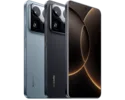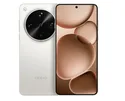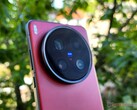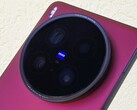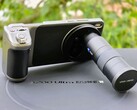Verdict
If you are looking for one of the best smartphones currently available in the Android segment, you can't go past the Vivo X200 Ultra. With its flagship, Vivo not only builds a high-quality and compelling phone, but also perfects the Zeiss camera system of its premium series.
As with the X200 Pro, the manufacturer is focusing on photography, but has gone one step further in terms of quality. Fans of ultra-wide-angle photos in particular will be delighted, as the X200 Ultra is in a league of its own compared to the competition, such as the iPhone 16 Pro.
The X200 Ultra's shortcomings mainly stem from limited availability outside China, such as missing information on the update schedule or issues with eSIM usage. The Vivo flagship is also less suitable for gamers because of its high heat dissipation and throttling issues. For this audience, we suggest checking out the ROG Phone 9 Pro.
Pros
Cons
Price and availability
The X200 Ultra, equipped with 12 GB LPDDR5X RAM and 256 GB UFS 4.1 memory, starts at 6,499 yuan, around US$900. Prices from our rental provider start at around US$1,023. A global launch is currently unlikely, and there are no indications to suggest otherwise.
Table of Contents
- Verdict
- Specifications of the Vivo X200 Ultra
- Case - Vivo X200 Ultra is waterproof
- Features - Vivo phone with USB 3
- Software - Vivo X200 Ultra with Android 15
- Communication and GNSS - Smartphone with 5G
- Phone functions and voice quality - Vivo X200 Ultra uses dual SIM
- Camera - Android phone with Zeiss optics
- Accessories and warranty - Vivo X200 Ultra with power adapter
- Input and operation - Smartphone with ultrasound technology
- Display - Vivo X200 Ultra relies on OLED
- Performance - Android smartphone with Snapdragon 8 Elite
- Emissions - Hot Android phone
- Battery life - Vivo X200 Ultra charges wirelessly
- Notebookcheck overall rating
- Possible alternatives comparison
Vivo aims to set a new standard in photo and video quality for smartphones with the X200 Ultra. On paper, this flagship is the first phone where there are hardly any compromises in the main camera quality.
In contrast to the Pro model, the X200 Ultra uses a Snapdragon 8 Elite SoC with two additional AI-ISP processors to improve the photo quality.
Specifications of the Vivo X200 Ultra
Case - Vivo X200 Ultra is waterproof
The case of the X200 Ultra impresses with its high-quality materials and excellent workmanship. The design is characterized by an efficient display-to-surface ratio, with a strong 90.2 percent. This means that the screen takes up most of the front for a modern appearance.
The Vivo flagship is IP69/IP68 certified, which guarantees protection against dust and water ingress. In addition to the color, each variant differs by the back panel surface finish. The red version is smooth, while the white model features a horizontally gridded surface, and the black version has a triangular pattern. According to Vivo, one highlight is the anti-ageing coating, which is designed to protect the material from scratches.
Similar to the Oppo Find X8 Ultra, the X200 Ultra features a dedicated camera button that provides access to various camera functions, including focus and zoom.
Features - Vivo phone with USB 3
The Vivo flagship features USB OTG, an IR blaster, Bluetooth 5.4, and an NFC chip for contactless payment. It also offers a fast USB 3.2 port with image output support and Miracast. An ultra-wideband chip, as in the Xiaomi 15S Pro, is missing, however.
Software - Vivo X200 Ultra with Android 15
The X200 Ultra uses the company's own OriginOS version 5, which is based on Android 15 and supports a variety of languages, including German and English. Vivo has not communicated how long it intends to support its flagship with updates. Google services are available via the in-house V-Appstore, and a subsequently installed Play Store can be used without any problems.
Sustainability
Vivo does not prioritize sustainability in its smartphones. Information on the choice of materials used or recycling is not openly communicated. The repairability is also barely comprehensible. The packaging appears to be plastic-free, though.
Communication and GNSS - Smartphone with 5G
At best, the X200 Ultra supports access to the 5G mobile network. There were no connectivity issues with the Vivo phone in our tests, thanks to the coverage of LTE bands 20 and 28 (also in the 4G network).
Within the home Wi-Fi network, the flagship phone offers fast Wi-Fi 7, but the 6 GHz channel is not supported. In our test, the X200 Ultra still achieved high transfer rates of over 1,500 MBit/s in combination with the Asus ROG Rapture GT-AXE11000 router.
| Networking | |
| Vivo X200 Ultra | |
| iperf3 transmit AXE11000 | |
| iperf3 receive AXE11000 | |
| Xiaomi 15S Pro | |
| iperf3 transmit AXE11000 6GHz | |
| iperf3 receive AXE11000 6GHz | |
| Vivo X200 Pro | |
| iperf3 transmit AXE11000 | |
| iperf3 receive AXE11000 | |
| Oppo Find X8 Ultra | |
| iperf3 transmit AXE11000 | |
| iperf3 receive AXE11000 | |
| Samsung Galaxy S25 Ultra | |
| iperf3 transmit AXE11000 | |
| iperf3 receive AXE11000 | |
| iperf3 transmit AXE11000 6GHz | |
| iperf3 receive AXE11000 6GHz | |
| Average 802.11 a/b/g/n/ac/ax/be | |
| iperf3 transmit AXE11000 | |
| iperf3 receive AXE11000 | |
| iperf3 transmit AXE11000 6GHz | |
| iperf3 receive AXE11000 6GHz | |
| Average of class Smartphone | |
| iperf3 transmit AXE11000 | |
| iperf3 receive AXE11000 | |
| iperf3 transmit AXE11000 6GHz | |
| iperf3 receive AXE11000 6GHz | |
On a bike ride, we took a look at the tracking qualities of the phone in comparison to a Garmin Venu 2. The X200 Ultra uses global satellite networks in dual-band to determine its location. Minor inaccuracies may appear in the detailed route, and the Vivo phone tends to simplify curves.
Phone functions and voice quality - Vivo X200 Ultra uses dual SIM
Camera - Android phone with Zeiss optics
Choosing a main camera with the X200 Ultra is challenging because all the sensors have balanced sizes. The Vivo flagship delights amateur photographers with a 35 mm lens and a 14 mm ultra-wide-angle lens, both equipped with the 1/1.28 inch LYT-818 sensor, including OIS, as well as the X200 Pro's famous 200 MP telephoto camera. The model also supports optical stabilization and 4K@120 video.
Unsurprisingly, the X200 Ultra delivers very good photo quality and excellent HDR calculation in every discipline. The ultra-wide-angle lens, in particular, outperforms the flagship competition, especially in low-light conditions. However, the 200 MP telephoto lens also impresses across the board with a lossless 3.7x magnification - even photos in full resolution are usable in indoor lighting.
We're seeing slight deficits of the X200 Ultra camera system with its Zeiss branding in very low light. Here, the Sony LYT-818, which is smaller than the LYT-900, can't quite compete with the main cameras of the Find X8 Ultra or Xiaomi 15 Ultra. The color accuracy could also be improved.
Image comparison
Choose a scene and navigate within the first image. One click changes the position on touchscreens. One click on the zoomed-in image opens the original in a new window. The first image shows the scaled photograph of the test device.
Main cameraMain cameraLow LightUltra wide-angle camera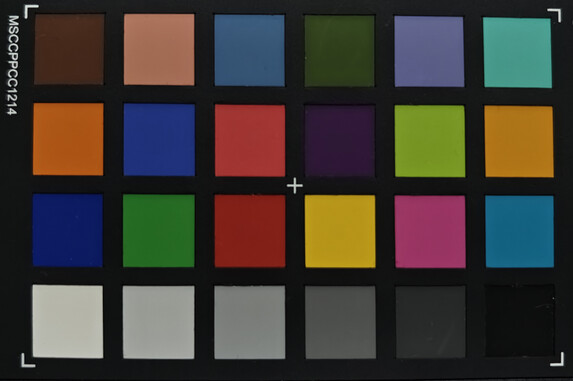
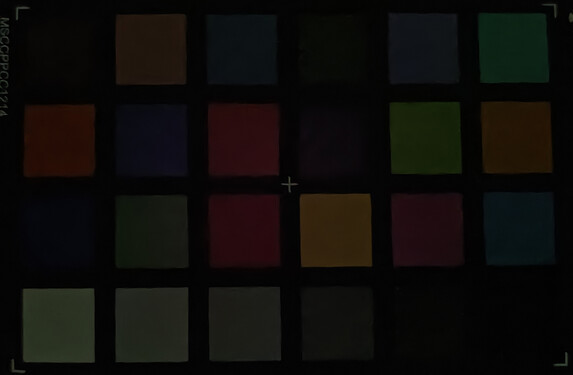
Accessories and warranty - Vivo X200 Ultra with power adapter
The scope of delivery includes a USB cable, a protective cover, and a 90-watt power adapter. Trading Shenzhen also includes an EU adaptor for the sockets used in this country, but this is not included as standard. For its flagship, Vivo also offers a Photography kit and a Zeiss teleconverter lens as an optional add-on (~US$420).
The Warranty is 12 months. With our test device from Trading Shenzhen, it is also possible to send the Vivo phone to a European shipping address in the event of a warranty claim.
Input and operation - Smartphone with ultrasound technology
The X200 Ultra uses a 3D ultrasound fingerprint sensor, which works very well. If you want to use facial data for unlocking, it is possible via the front camera, but this 2D method is less secure.
Inputs via the touchscreen are implemented quickly, with a polling rate of 300 Hz. Vivo has also installed a high-quality vibration motor, although it is not quite at the top level.
Display - Vivo X200 Ultra relies on OLED

The 6.82-inch LTPO display has a resolution of 3,168 x 1,440 pixels, giving it a very high pixel density of 510 PPI. The refresh rate adjusts dynamically between 1 Hz and 120 Hz.
According to the data sheet, the X200 Ultra uses PWM dimming with a frequency of 2,380 Hz to control brightness. We did not achieve the advertised peak brightness of 4,500 cd/m² in the realistic APL18 test, but 2,189 cd/m² is still a very good result. When reproducing HDR content, OLEDs typically still have room for improvement.
| |||||||||||||||||||||||||
Brightness Distribution: 93 %
Center on Battery: 1286 cd/m²
Contrast: ∞:1 (Black: 0 cd/m²)
ΔE ColorChecker Calman: 1.04 | ∀{0.5-29.43 Ø4.82}
ΔE Greyscale Calman: 1.6 | ∀{0.09-98 Ø5.1}
99.9% sRGB (Calman 2D)
Gamma: 2.249
CCT: 6575 K
| Vivo X200 Ultra AMOLED, 3168x1440, 6.8" | Xiaomi 15S Pro 3200x1440, 6.7" | Vivo X200 Pro OLED, 2800x1260, 6.8" | Oppo Find X8 Ultra AMOLED, 3168x1440, 6.8" | Samsung Galaxy S25 Ultra Dynamic AMOLED 2X, 3120x1440, 6.9" | |
|---|---|---|---|---|---|
| Screen | -64% | 31% | 11% | -55% | |
| Brightness middle | 1286 | 983 -24% | 1828 42% | 1366 6% | 1357 6% |
| Brightness | 1238 | 949 -23% | 1828 48% | 1325 7% | 1350 9% |
| Brightness Distribution | 93 | 91 -2% | 94 1% | 95 2% | 94 1% |
| Black Level * | |||||
| Colorchecker dE 2000 * | 1.04 | 2.07 -99% | 0.7 33% | 0.88 15% | 3.1 -198% |
| Colorchecker dE 2000 max. * | 2.26 | 5.24 -132% | 1.6 29% | 1.55 31% | 4.7 -108% |
| Greyscale dE 2000 * | 1.6 | 3.3 -106% | 1.1 31% | 1.5 6% | 2.2 -38% |
| Gamma | 2.249 98% | 2.233 99% | 2.25 98% | 2.303 96% | 2 110% |
| CCT | 6575 99% | 7224 90% | 6520 100% | 6626 98% | 6391 102% |
* ... smaller is better
Screen Flickering / PWM (Pulse-Width Modulation)
| Screen flickering / PWM detected | 121 Hz Amplitude: 17 % | ||
The display backlight flickers at 121 Hz (worst case, e.g., utilizing PWM) . The frequency of 121 Hz is very low, so the flickering may cause eyestrain and headaches after extended use. In comparison: 53 % of all tested devices do not use PWM to dim the display. If PWM was detected, an average of 8316 (minimum: 5 - maximum: 343500) Hz was measured. | |||
Measurement series with fixed zoom level and different brightness settings (The amplitude curve at minimum brightness looks flat, but this is due to the scaling. The info box shows the enlarged version of the amplitude at minimum brightness)
We check the color representation using a photo spectrometer and the Calman analysis software. The best results can be achieved in Professional color mode. The deviations are within the target range (<3) and are generally very low.
Display Response Times
| ↔ Response Time Black to White | ||
|---|---|---|
| 2.9 ms ... rise ↗ and fall ↘ combined | ↗ 1.4 ms rise | |
| ↘ 1.5 ms fall | ||
| The screen shows very fast response rates in our tests and should be very well suited for fast-paced gaming. In comparison, all tested devices range from 0.1 (minimum) to 240 (maximum) ms. » 12 % of all devices are better. This means that the measured response time is better than the average of all tested devices (20.4 ms). | ||
| ↔ Response Time 50% Grey to 80% Grey | ||
| 2.6 ms ... rise ↗ and fall ↘ combined | ↗ 1.1 ms rise | |
| ↘ 1.5 ms fall | ||
| The screen shows very fast response rates in our tests and should be very well suited for fast-paced gaming. In comparison, all tested devices range from 0.165 (minimum) to 636 (maximum) ms. » 10 % of all devices are better. This means that the measured response time is better than the average of all tested devices (32 ms). | ||
Performance - Android smartphone with Snapdragon 8 Elite
Unlike the X200 Pro, the X200 Ultra does not come with a Dimensity 9400 but a high-end SoC from Qualcomm. The Snapdragon 8 Elite achieves very good results in the CPU benchmarks, but the X200 Ultra falls somewhat short of expectations, even in performance mode. The situation is different with the Adreno 830 here, as the values in GFXBench are slightly better than those of a Find X8 Ultra or Galaxy S25 Ultra.
| UL Procyon AI Inference for Android - Overall Score NNAPI | |
| Vivo X200 Pro | |
| Samsung Galaxy S25 Ultra | |
| Vivo X200 Ultra | |
| Xiaomi 15S Pro | |
| Average of class Smartphone (3769 - 81594, n=140, last 2 years) | |
| Average Qualcomm Snapdragon 8 Elite (8865 - 22767, n=15) | |
| Oppo Find X8 Ultra | |
GFXBench (DX / GLBenchmark) 2.7: T-Rex Onscreen | 1920x1080 T-Rex Offscreen
GFXBench 3.0: on screen Manhattan Onscreen OGL | 1920x1080 1080p Manhattan Offscreen
GFXBench 3.1: on screen Manhattan ES 3.1 Onscreen | 1920x1080 Manhattan ES 3.1 Offscreen
GFXBench: on screen Car Chase Onscreen | 1920x1080 Car Chase Offscreen | on screen Aztec Ruins High Tier Onscreen | 2560x1440 Aztec Ruins High Tier Offscreen | on screen Aztec Ruins Normal Tier Onscreen | 1920x1080 Aztec Ruins Normal Tier Offscreen | 3840x2160 4K Aztec Ruins High Tier Offscreen
| 3DMark / Wild Life Extreme Unlimited | |
| Samsung Galaxy S25 Ultra | |
| Vivo X200 Ultra | |
| Oppo Find X8 Ultra | |
| Vivo X200 Pro | |
| Xiaomi 15S Pro | |
| 3DMark / Wild Life Extreme | |
| Samsung Galaxy S25 Ultra | |
| Vivo X200 Ultra | |
| Oppo Find X8 Ultra | |
| Vivo X200 Pro | |
| Xiaomi 15S Pro | |
| 3DMark / Wild Life Unlimited Score | |
| Samsung Galaxy S25 Ultra | |
| Oppo Find X8 Ultra | |
| Vivo X200 Ultra | |
| Vivo X200 Pro | |
| Xiaomi 15S Pro | |
| 3DMark / Solar Bay Score | |
| Samsung Galaxy S25 Ultra | |
| Vivo X200 Ultra | |
| Oppo Find X8 Ultra | |
| Vivo X200 Pro | |
| Xiaomi 15S Pro | |
| 3DMark / Solar Bay Unlimited Score | |
| Samsung Galaxy S25 Ultra | |
| Vivo X200 Ultra | |
| Oppo Find X8 Ultra | |
| Vivo X200 Pro | |
| Xiaomi 15S Pro | |
| 3DMark / Steel Nomad Light Unlimited Score | |
| Vivo X200 Ultra | |
| Oppo Find X8 Ultra | |
| Vivo X200 Pro | |
| Xiaomi 15S Pro | |
| Samsung Galaxy S25 Ultra | |
| 3DMark / Steel Nomad Light Score | |
| Samsung Galaxy S25 Ultra | |
| Vivo X200 Ultra | |
| Oppo Find X8 Ultra | |
| Vivo X200 Pro | |
| Xiaomi 15S Pro | |
| GFXBench (DX / GLBenchmark) 2.7 / T-Rex Onscreen | |
| Samsung Galaxy S25 Ultra | |
| Vivo X200 Pro | |
| Vivo X200 Ultra | |
| Xiaomi 15S Pro | |
| Oppo Find X8 Ultra | |
| GFXBench (DX / GLBenchmark) 2.7 / T-Rex Offscreen | |
| Xiaomi 15S Pro | |
| Vivo X200 Pro | |
| Vivo X200 Ultra | |
| Oppo Find X8 Ultra | |
| Samsung Galaxy S25 Ultra | |
| GFXBench 3.0 / Manhattan Onscreen OGL | |
| Samsung Galaxy S25 Ultra | |
| Vivo X200 Pro | |
| Vivo X200 Ultra | |
| Xiaomi 15S Pro | |
| Oppo Find X8 Ultra | |
| GFXBench 3.0 / 1080p Manhattan Offscreen | |
| Vivo X200 Pro | |
| Vivo X200 Ultra | |
| Samsung Galaxy S25 Ultra | |
| Oppo Find X8 Ultra | |
| Xiaomi 15S Pro | |
| GFXBench 3.1 / Manhattan ES 3.1 Onscreen | |
| Samsung Galaxy S25 Ultra | |
| Vivo X200 Pro | |
| Vivo X200 Ultra | |
| Xiaomi 15S Pro | |
| Oppo Find X8 Ultra | |
| GFXBench 3.1 / Manhattan ES 3.1 Offscreen | |
| Vivo X200 Pro | |
| Vivo X200 Ultra | |
| Oppo Find X8 Ultra | |
| Xiaomi 15S Pro | |
| Samsung Galaxy S25 Ultra | |
| GFXBench / Car Chase Onscreen | |
| Vivo X200 Pro | |
| Vivo X200 Ultra | |
| Xiaomi 15S Pro | |
| Samsung Galaxy S25 Ultra | |
| Oppo Find X8 Ultra | |
| GFXBench / Car Chase Offscreen | |
| Vivo X200 Ultra | |
| Oppo Find X8 Ultra | |
| Vivo X200 Pro | |
| Xiaomi 15S Pro | |
| Samsung Galaxy S25 Ultra | |
| GFXBench / Aztec Ruins High Tier Onscreen | |
| Vivo X200 Pro | |
| Samsung Galaxy S25 Ultra | |
| Xiaomi 15S Pro | |
| Vivo X200 Ultra | |
| Oppo Find X8 Ultra | |
| GFXBench / Aztec Ruins High Tier Offscreen | |
| Vivo X200 Pro | |
| Vivo X200 Ultra | |
| Oppo Find X8 Ultra | |
| Samsung Galaxy S25 Ultra | |
| Xiaomi 15S Pro | |
| GFXBench / Aztec Ruins Normal Tier Onscreen | |
| Samsung Galaxy S25 Ultra | |
| Vivo X200 Pro | |
| Vivo X200 Ultra | |
| Xiaomi 15S Pro | |
| Oppo Find X8 Ultra | |
| GFXBench / Aztec Ruins Normal Tier Offscreen | |
| Vivo X200 Ultra | |
| Oppo Find X8 Ultra | |
| Vivo X200 Pro | |
| Xiaomi 15S Pro | |
| Samsung Galaxy S25 Ultra | |
| GFXBench / 4K Aztec Ruins High Tier Offscreen | |
| Vivo X200 Pro | |
| Oppo Find X8 Ultra | |
| Samsung Galaxy S25 Ultra | |
| Vivo X200 Ultra | |
| Xiaomi 15S Pro | |
| Jetstream 2 - 2.2 Total Score | |
| Vivo X200 Ultra | |
| Xiaomi 15S Pro (Chrome 137) | |
| Average Qualcomm Snapdragon 8 Elite (113.6 - 304, n=5) | |
| Oppo Find X8 Ultra (Chrome 136) | |
| Average of class Smartphone (56.4 - 401, n=27, last 2 years) | |
| Speedometer 3.0 - Score | |
| Samsung Galaxy S25 Ultra (Chrome 132) | |
| Average Qualcomm Snapdragon 8 Elite (15.3 - 36.8, n=14) | |
| Vivo X200 Ultra (Chrome 137) | |
| Vivo X200 Pro (Chrome 131) | |
| Xiaomi 15S Pro | |
| Average of class Smartphone (1.03 - 34, n=107, last 2 years) | |
| WebXPRT 4 - Overall | |
| Samsung Galaxy S25 Ultra (Chrome 132) | |
| Vivo X200 Pro (Chrome 131) | |
| Xiaomi 15S Pro (Chrome 137) | |
| Average Qualcomm Snapdragon 8 Elite (102 - 255, n=15) | |
| Vivo X200 Ultra (Chrome 137) | |
| Oppo Find X8 Ultra (Chrome 136) | |
| Average of class Smartphone (22 - 273, n=146, last 2 years) | |
| Octane V2 - Total Score | |
| Samsung Galaxy S25 Ultra (Chrome 132) | |
| Vivo X200 Ultra (Chrome 137) | |
| Vivo X200 Pro (Chrome 131) | |
| Xiaomi 15S Pro | |
| Average Qualcomm Snapdragon 8 Elite (25448 - 95506, n=21) | |
| Oppo Find X8 Ultra (Chrome 136) | |
| Average of class Smartphone (2228 - 100368, n=203, last 2 years) | |
| Mozilla Kraken 1.1 - Total | |
| Average of class Smartphone (277 - 28190, n=157, last 2 years) | |
| Oppo Find X8 Ultra (Chrome 136) | |
| Average Qualcomm Snapdragon 8 Elite (383 - 1170, n=17) | |
| Xiaomi 15S Pro (Chromne 137) | |
| Vivo X200 Pro (Chrome 131) | |
| Vivo X200 Ultra | |
| Samsung Galaxy S25 Ultra (Chrome 132) | |
* ... smaller is better
| Vivo X200 Ultra | Xiaomi 15S Pro | Vivo X200 Pro | Oppo Find X8 Ultra | Samsung Galaxy S25 Ultra | Average 1 TB UFS 4.0 Flash | Average of class Smartphone | |
|---|---|---|---|---|---|---|---|
| AndroBench 3-5 | 19% | -9% | -1% | -10% | 3% | -34% | |
| Sequential Read 256KB | 3358.64 | 3786.34 13% | 2694.85 -20% | 3754.43 12% | 3823.28 14% | 3428 ? 2% | 2181 ? -35% |
| Sequential Write 256KB | 2998.87 | 3649.81 22% | 2174.26 -27% | 3564.22 19% | 3361.24 12% | 3211 ? 7% | 1791 ? -40% |
| Random Read 4KB | 462.41 | 422.84 -9% | 317.29 -31% | 375.9 -19% | 287.85 -38% | 395 ? -15% | 295 ? -36% |
| Random Write 4KB | 459.33 | 677.95 48% | 658.43 43% | 389.28 -15% | 331.61 -28% | 543 ? 18% | 342 ? -26% |
Emissions - Hot Android phone
Temperature
With a cool case, the differences between the Pro and Ultra models in 3DMark are not very pronounced, but the heat development of the X200 Ultra ensures a slightly lower throttling of "only" up to 40 percent in the stress tests.
(-) The maximum temperature on the upper side is 49.8 °C / 122 F, compared to the average of 35.2 °C / 95 F, ranging from 21.9 to 247 °C for the class Smartphone.
(-) The bottom heats up to a maximum of 47.4 °C / 117 F, compared to the average of 33.9 °C / 93 F
(+) In idle usage, the average temperature for the upper side is 30 °C / 86 F, compared to the device average of 32.9 °C / 91 F.
3DMark Steel Nomad Stress Test
| 3DMark | |
| Wild Life Stress Test Stability | |
| Xiaomi 15S Pro | |
| Oppo Find X8 Ultra | |
| Vivo X200 Ultra | |
| Samsung Galaxy S25 Ultra | |
| Vivo X200 Pro | |
| Wild Life Extreme Stress Test | |
| Oppo Find X8 Ultra | |
| Xiaomi 15S Pro | |
| Vivo X200 Ultra | |
| Samsung Galaxy S25 Ultra | |
| Vivo X200 Pro | |
| Solar Bay Stress Test Stability | |
| Oppo Find X8 Ultra | |
| Xiaomi 15S Pro | |
| Vivo X200 Ultra | |
| Samsung Galaxy S25 Ultra | |
| Vivo X200 Pro | |
| Steel Nomad Light Stress Test Stability | |
| Oppo Find X8 Ultra | |
| Xiaomi 15S Pro | |
| Vivo X200 Ultra | |
| Vivo X200 Pro | |
| Samsung Galaxy S25 Ultra | |
Speaker
The two speakers in the Vivo flagship offer good sound with a slight bass. Headphones can be connected via a USB port or wirelessly using Bluetooth 5.4.
Vivo X200 Ultra audio analysis
(+) | speakers can play relatively loud (87.4 dB)
Bass 100 - 315 Hz
(-) | nearly no bass - on average 17.7% lower than median
(±) | linearity of bass is average (11.2% delta to prev. frequency)
Mids 400 - 2000 Hz
(±) | higher mids - on average 6.8% higher than median
(±) | linearity of mids is average (7.3% delta to prev. frequency)
Highs 2 - 16 kHz
(±) | higher highs - on average 5% higher than median
(+) | highs are linear (4.8% delta to prev. frequency)
Overall 100 - 16.000 Hz
(±) | linearity of overall sound is average (18% difference to median)
Compared to same class
» 14% of all tested devices in this class were better, 8% similar, 77% worse
» The best had a delta of 12%, average was 36%, worst was 134%
Compared to all devices tested
» 36% of all tested devices were better, 8% similar, 56% worse
» The best had a delta of 4%, average was 24%, worst was 134%
Samsung Galaxy S25 Ultra audio analysis
(+) | speakers can play relatively loud (93 dB)
Bass 100 - 315 Hz
(-) | nearly no bass - on average 21.5% lower than median
(+) | bass is linear (4.8% delta to prev. frequency)
Mids 400 - 2000 Hz
(+) | balanced mids - only 4.3% away from median
(+) | mids are linear (4.4% delta to prev. frequency)
Highs 2 - 16 kHz
(+) | balanced highs - only 3.3% away from median
(+) | highs are linear (1.4% delta to prev. frequency)
Overall 100 - 16.000 Hz
(+) | overall sound is linear (14.6% difference to median)
Compared to same class
» 1% of all tested devices in this class were better, 2% similar, 97% worse
» The best had a delta of 12%, average was 36%, worst was 134%
Compared to all devices tested
» 17% of all tested devices were better, 4% similar, 78% worse
» The best had a delta of 4%, average was 24%, worst was 134%
Battery life - Vivo X200 Ultra charges wirelessly
Power consumption
The generously sized 6,000 mAh battery can be charged with a maximum of 90 watts; 40 watts is possible wirelessly at peak. In our test, the X200 Ultra takes 50 minutes to charge fully.
In the consumption measurements, the Snapdragon 8 Elite is not really frugal, and the power consumption is quite high overall.
| Off / Standby | |
| Idle | |
| Load |
|
Key:
min: | |
| Vivo X200 Ultra 6000 mAh | Xiaomi 15S Pro 6100 mAh | Vivo X200 Pro 6000 mAh | Oppo Find X8 Ultra 6100 mAh | Samsung Galaxy S25 Ultra 5000 mAh | Average Qualcomm Snapdragon 8 Elite | Average of class Smartphone | |
|---|---|---|---|---|---|---|---|
| Power Consumption | 50% | 43% | 46% | 40% | 33% | 46% | |
| Idle Minimum * | 1.6 | 0.8 50% | 0.43 73% | 0.8 50% | 0.55 66% | 1.137 ? 29% | 0.872 ? 45% |
| Idle Average * | 2.9 | 1.4 52% | 1.76 39% | 1.1 62% | 0.77 73% | 1.711 ? 41% | 1.43 ? 51% |
| Idle Maximum * | 3.7 | 1.7 54% | 1.83 51% | 1.6 57% | 0.91 75% | 1.925 ? 48% | 1.592 ? 57% |
| Load Average * | 10.6 | 6.3 41% | 9.58 10% | 8.5 20% | 13.81 -30% | 9.04 ? 15% | 7.18 ? 32% |
| Load Maximum * | 19.5 | 9.1 53% | 11.43 41% | 11.8 39% | 16.69 14% | 12.9 ? 34% | 10.8 ? 45% |
* ... smaller is better
Power consumption: Geekbench (150 cd/m²)
Power consumption: GFXbench (150 cd/m²)
Battery life
Under realistic conditions and a display brightness of 150 cd/m², the X200 Ultra shows a very good runtime in our WLAN test. Compared to the Pro model, the phone has a similar battery life, lasting around 23.5 hours.
| Vivo X200 Ultra 6000 mAh | Xiaomi 15S Pro 6100 mAh | Vivo X200 Pro 6000 mAh | Oppo Find X8 Ultra 6100 mAh | Samsung Galaxy S25 Ultra 5000 mAh | |
|---|---|---|---|---|---|
| Battery Runtime | |||||
| WiFi v1.3 | 1398 | 1526 9% | 1404 0% | 1374 -2% | 1331 -5% |
Notebookcheck overall rating
If you are looking for one of the best smartphones of 2025, the Vivo X200 Ultra must be on your radar.
Vivo X200 Ultra
- 06/29/2025 v8
Marcus Herbrich
Possible alternatives comparison
Image | Model / Review | Price | Weight | Drive | Display |
|---|---|---|---|---|---|
| Vivo X200 Ultra Qualcomm Snapdragon 8 Elite ⎘ Qualcomm Adreno 830 ⎘ 16 GB Memory, 1024 GB | Amazon: 1. $15.99 AKABEILA [3 Pack Privacy Scr... 2. $9.62 YQINHHME for Vivo X200 Ultra... 3. $11.22 YQINHHME for Vivo X200 Ultra... List Price: 890€ | 229 g | 1 TB UFS 4.0 Flash | 6.82" 3168x1440 510 PPI AMOLED | |
| Xiaomi 15S Pro Xiaomi Xring O1 ⎘ ARM Immortalis-G925 MC16 ⎘ 16 GB Memory, 512 GB | Amazon: 1. $3.99 AKABEILA [2 Pack Privacy Scr... 2. $6.99 GANGANPRO 1 Pack HD Screen P... 3. $7.99 Lucyliy (3 packs) Compatible... List Price: 830€ | 216 g | 512 GB UFS 4.1 Flash | 6.73" 3200x1440 521 PPI | |
| Vivo X200 Pro Mediatek Dimensity 9400 ⎘ ARM Immortalis-G925 MC12 ⎘ 15 GB Memory, 512 GB | Amazon: 1. $11.49 TNKISRY Tempered Glass for V... 2. $22.98 AKABEILA [3 Pack Privacy Scr... 3. $7.99 Lucyliy (3 Pack) Compatible ... List Price: 850€ | 223 g | 512 GB UFS 4.0 Flash | 6.78" 2800x1260 453 PPI OLED | |
| Oppo Find X8 Ultra Qualcomm Snapdragon 8 Elite ⎘ Qualcomm Adreno 830 ⎘ 16 GB Memory, 512 GB | Amazon: 1. $15.99 AKABEILA [3 Pack Privacy Scr... 2. $16.02 [5 Pack] for Oppo Find X8 Ul... 3. $14.62 [4 Pack] for Oppo Find X8 Ul... List Price: 1050€ | 226 g | 512 GB UFS 4.1 Flash | 6.82" 3168x1440 510 PPI AMOLED | |
| Samsung Galaxy S25 Ultra Qualcomm Snapdragon 8 Elite for Galaxy ⎘ Qualcomm Adreno 830 ⎘ 12 GB Memory, 256 GB | Amazon: 1. $14.99 Super Fast Charger Type C, 2... 2. $7.57 firtstnow 3 Pack Glass Scree... 3. $13.59 AACL 3-Pack for Samsung Gala... List Price: 1449€ | 218 g | 256 GB UFS 4.0 Flash | 6.90" 3120x1440 498 PPI Dynamic AMOLED 2X |
Transparency
The selection of devices to be reviewed is made by our editorial team. The test sample was provided to the author as a loan by the manufacturer or retailer for the purpose of this review. The lender had no influence on this review, nor did the manufacturer receive a copy of this review before publication. There was no obligation to publish this review. We never accept compensation or payment in return for our reviews. As an independent media company, Notebookcheck is not subjected to the authority of manufacturers, retailers or publishers.
This is how Notebookcheck is testing
Every year, Notebookcheck independently reviews hundreds of laptops and smartphones using standardized procedures to ensure that all results are comparable. We have continuously developed our test methods for around 20 years and set industry standards in the process. In our test labs, high-quality measuring equipment is utilized by experienced technicians and editors. These tests involve a multi-stage validation process. Our complex rating system is based on hundreds of well-founded measurements and benchmarks, which maintains objectivity. Further information on our test methods can be found here.




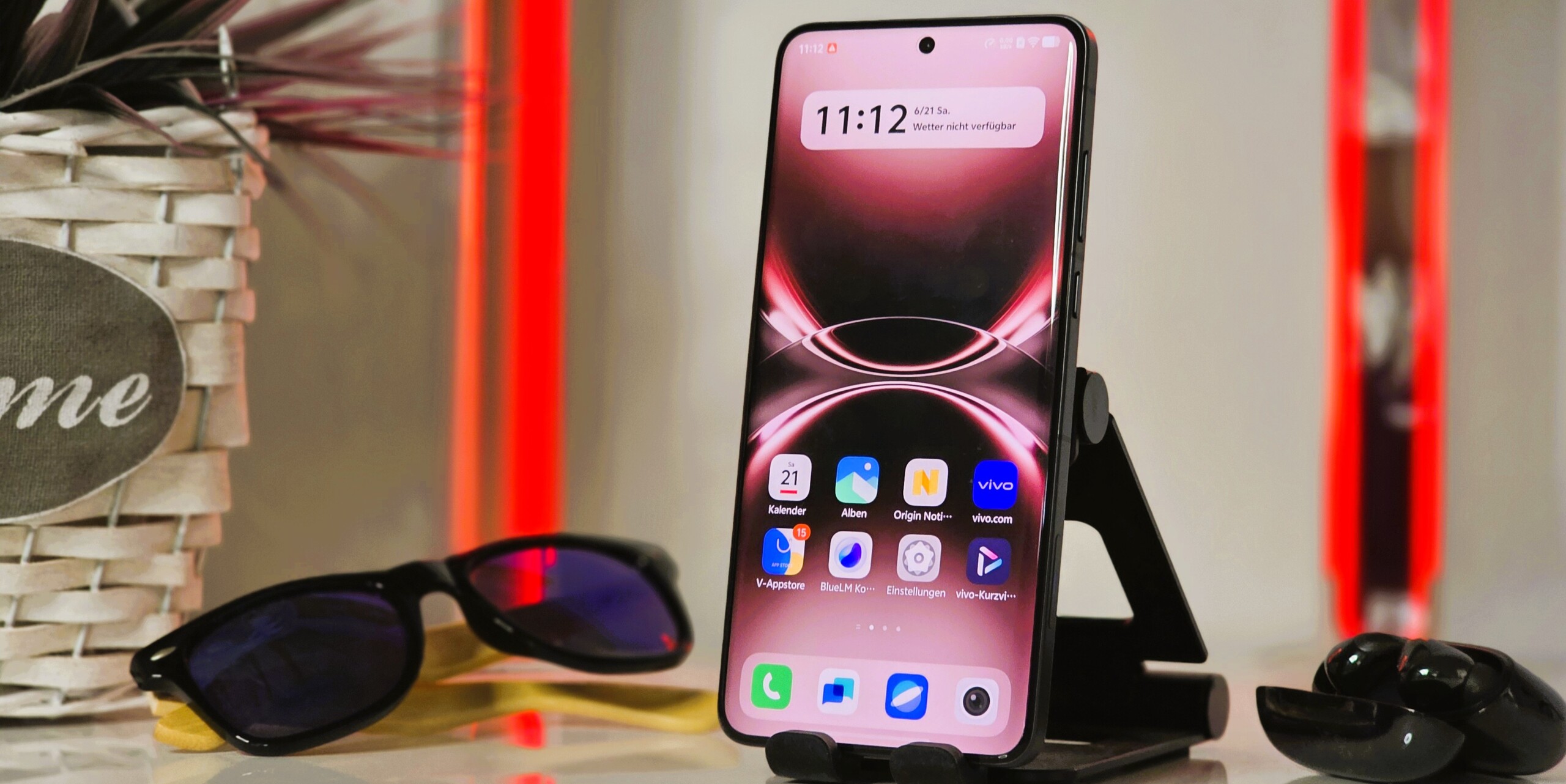


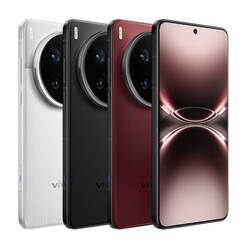




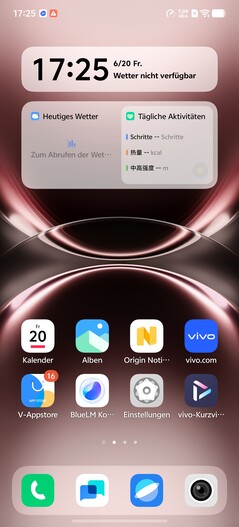

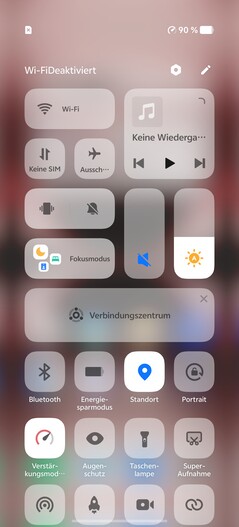
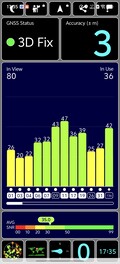
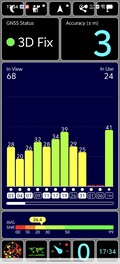




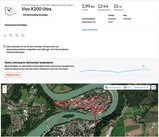










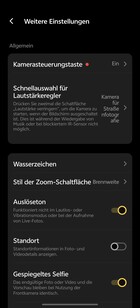
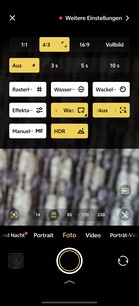
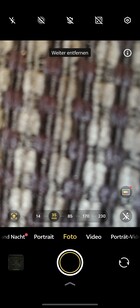
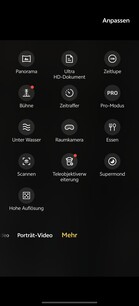


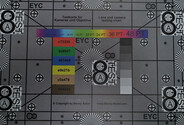



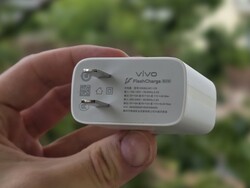
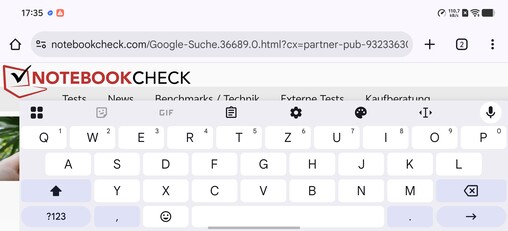








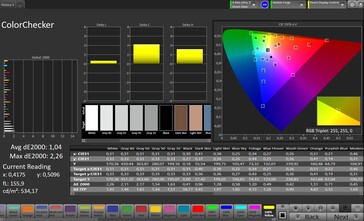
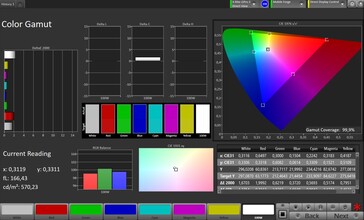
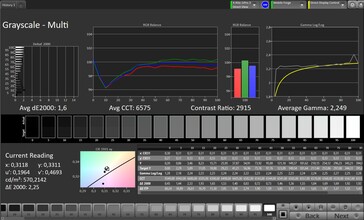
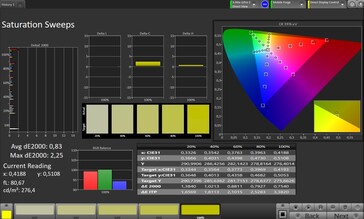
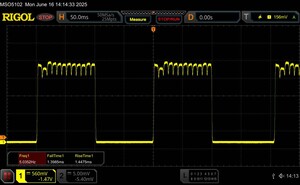
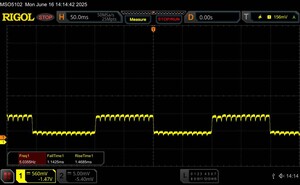
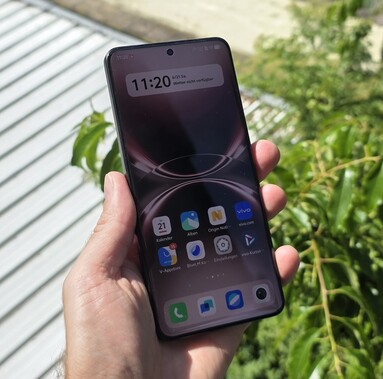
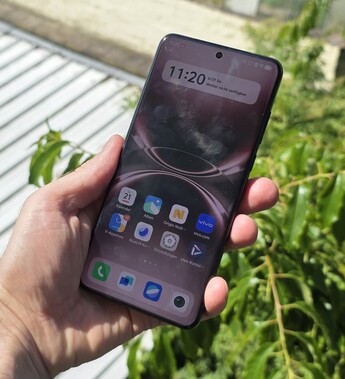
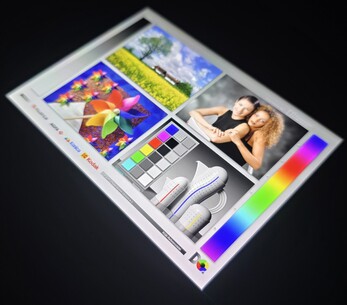

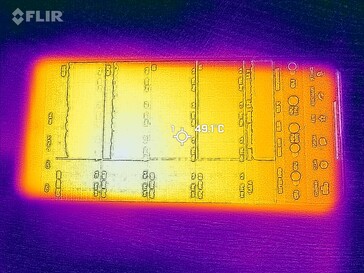
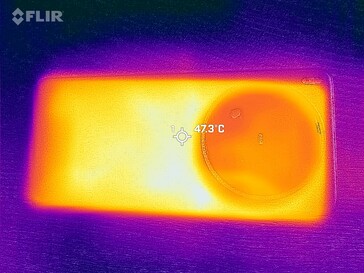
 Total Sustainability Score:
Total Sustainability Score: 
